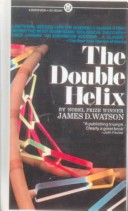Reviewed by brokentune on
I expected more from Watson's book.
And then there is the question about Rosalind Franklin's contribution to the discovery.
While Watson does spend some time in the epilogue to credit Franklin for her work on the subject, it seems too little, too late. He spends the entire book painting her as an uncooperative, dour, argumentative, bossy, frump with an "acid smile" in a career mostly reserved for unattractive women who have little chance of catching a husband. (He actually introduces her in the book in almost exactly those terms.)
Oh, and there is little explanation of the structure of DNA itself. It really is more of an account of his thoughts on girls, stomach pains, and on the personal lives of people Watson encountered when working on the project.
Reading updates
- Started reading
- 17 June, 2018: Finished reading
- 17 June, 2018: Reviewed
